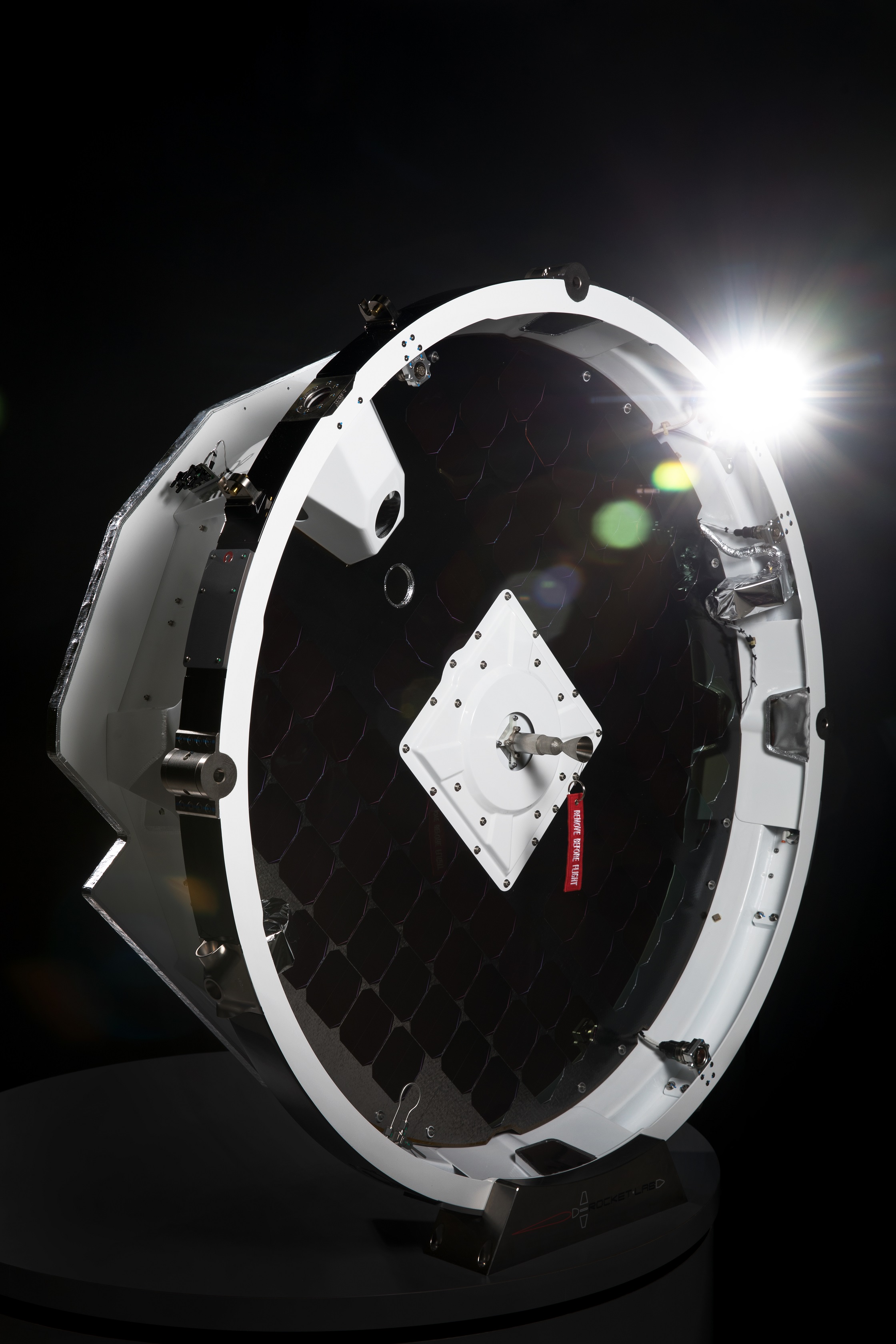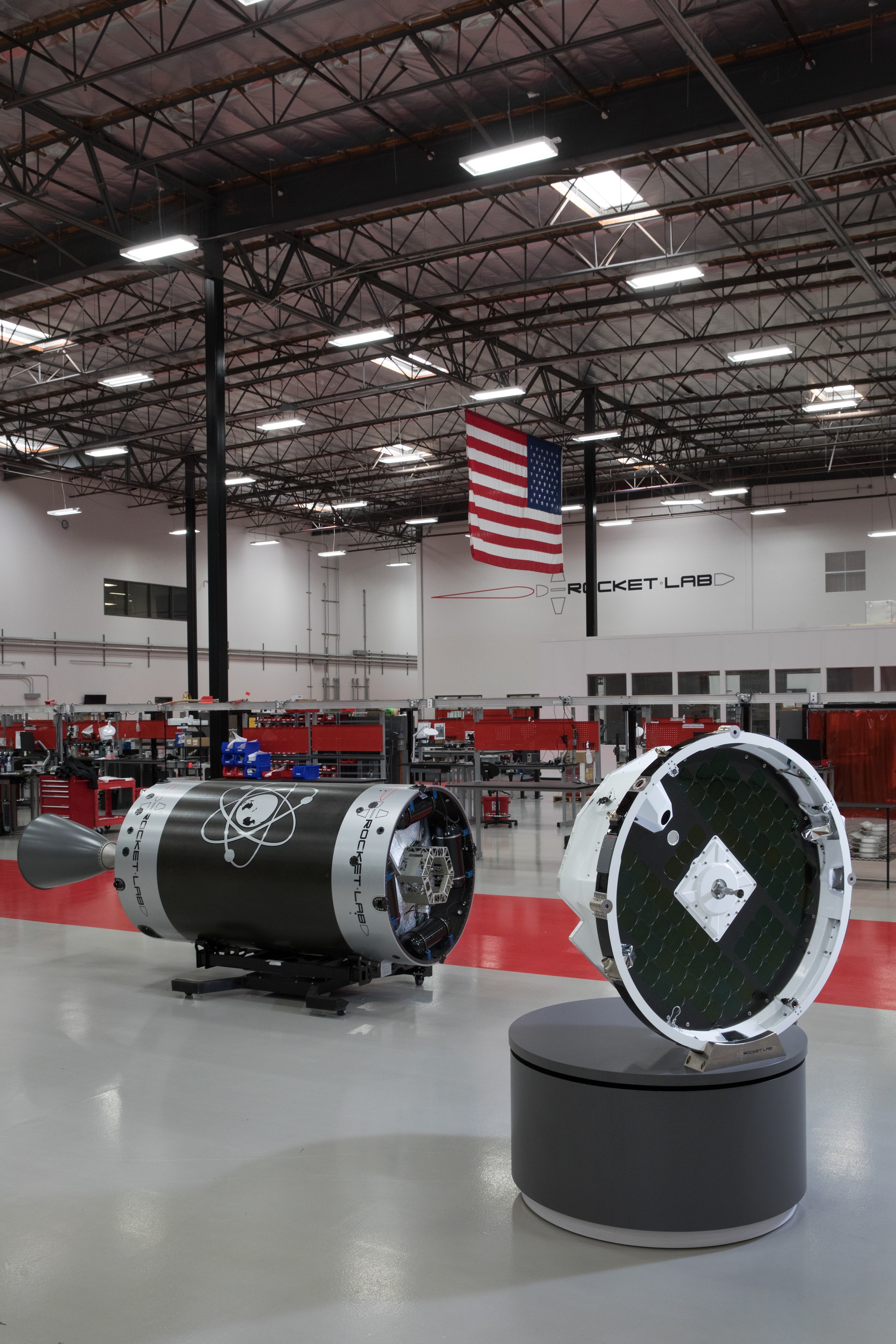
Rocket Lab isn't content to just build launch vehicles anymore.
The California-based startup, which lofts small spacecraft to orbit with a rocket called Electron, just unveiled an in-house satellite platform designed to host customer payloads.
The idea behind this satellite line, known as Photon, is to provide end-to-end spaceflight services, allowing customers to concentrate on developing their payloads and generating revenue, Rocket Lab representatives said. The project was unveiled Monday (April 8) at the 35th Space Symposium in Colorado Springs, Colorado.
Related: In Photos: Rocket Lab and Its Electron Booster
"Small-satellite operators want to focus on providing data or services from space, but building satellite hardware is a significant barrier to achieving this," Rocket Lab CEO Peter Beck said in a statement.
"As the turnkey solution for complete small-satellite missions, Rocket Lab brings space within easy reach," Beck added. "We enable our customers to focus on their payload and mission. We look after the rest."
Photon fits well with Rocket Lab's core mission, which involves greatly increasing access to space. Indeed, the satellite program was part of Rocket Lab's vision from the very beginning, Beck said.
Get the Space.com Newsletter
Breaking space news, the latest updates on rocket launches, skywatching events and more!
The other part of that vision centers on the 57-foot-tall (17 meters) Electron, a two-stage, expendable rocket that can loft about 500 lbs. (227 kilograms) to orbit on each $5 million liftoff.
Electron has flown four satellite-lofting missions to date, all of them successful. The most recent liftoff, which orbited the R3D2 experimental satellite for the United States Defense Advanced Research Projects Agency (DARPA), occurred late last month.
The company aims to ramp up Electron's flight cadence soon. If all goes according to plan, Rocket Lab will launch about a dozen Electron missions in 2019, Beck has said. (The next liftoff, a mission for the U.S. Air Force, is scheduled for later this month.)

The Photon satellite is an evolution of the Electron's "kick stage," a single-engine craft that circularizes the orbits of small satellites toward the end of Rocket Lab missions.
Photon is designed to operate in low-Earth orbit for up to five years and can accommodate payloads weighing as much as 375 lbs. (170 kg), Rocket Lab representatives said. The satellite platform features its own avionics suite and communications and attitude-control systems.
Photons are built at Rocket Lab's headquarters in Huntington Beach, California. The first operational Photon is scheduled to launch late this year, from the company's New Zealand pad. Customer missions should follow in 2020, Rocket Lab representatives said.
When the Photon line is up and running, the time from order to launch will be as little as four months, company representatives added.
- Rocket Lab Aims to Win Cubesat-Launching Race
- It's Business Time! Rocket Lab Lofts 6 Satellites on 1st Commercial Launch
- Cubesats: Tiny, Versatile Spacecraft Explained (Infographic)
Mike Wall's book about the search for alien life, "Out There" (Grand Central Publishing, 2018; illustrated by Karl Tate), is out now. Follow him on Twitter @michaeldwall. Follow us on Twitter @Spacedotcom or Facebook.
Join our Space Forums to keep talking space on the latest missions, night sky and more! And if you have a news tip, correction or comment, let us know at: community@space.com.

Michael Wall is a Senior Space Writer with Space.com and joined the team in 2010. He primarily covers exoplanets, spaceflight and military space, but has been known to dabble in the space art beat. His book about the search for alien life, "Out There," was published on Nov. 13, 2018. Before becoming a science writer, Michael worked as a herpetologist and wildlife biologist. He has a Ph.D. in evolutionary biology from the University of Sydney, Australia, a bachelor's degree from the University of Arizona, and a graduate certificate in science writing from the University of California, Santa Cruz. To find out what his latest project is, you can follow Michael on Twitter.








